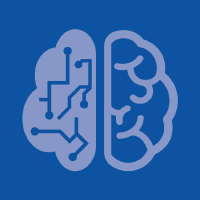Topic Menu
► Topic MenuTopic Editors






Electronic Communications, IOT and Big Data
Topic Information
Dear Colleagues,
The 2nd IEEE International Conference on Electronic Communications, Internet of Things and Big Data Conference 2022 will be held in Hsinchu, Taiwan, from July 15 to 17, 2022 (http://www.iceib.asia/). It will provide a communication platform for high-tech personnel and researchers in the topics of Electronic Communications, Internet of Things and Big Data. The booming economic development in Asia, especially the advanced technology in electronic communications, Internet of Things and big data, has attracted great attention from universities, research institutions and many companies. This conference will focus on research with innovative ideas or results and practical application. Topics of interest include, but are not limited to, the following:
I. Big Data and Cloud Computing:
1) Models and algorithms of big data;
2) Architecture of big data;
3) Big data management;
4) Big data analysis and processing;
5) Security and privacy of big data;
6) Big data in smart cities;
7) Search, mining and visualization of big data;
8) Technologies, services and application of big data;
9) Edge computing;
10) Architectures and systems of cloud computing;
11) Models, simulations, designs and paradigms of cloud computing;
12) Management and operations of cloud computing;
13) Technologies, services and applications of cloud computing;
14) Dynamic resource supply and consumption;
15) Management and analysis of geospatial big data;
16) UAV oblique photography and ground 3D real scene modeling;
17) Aerial photography of UAV loaded with multispectral sensors.
II. Technologies and Application of Artificial Intelligence:
1) Basic theory and application of Artificial Intelligence;
2) Knowledge science and knowledge engineering;
3) Machine learning and data mining;
4) Machine perception and virtual reality;
5) Natural language processing and understanding;
6) Neural networks and deep learning;
7) Pattern recognition theory and application;
8) Rough set and soft computing;
9) Biometric identification;
10) Computer vision and image processing;
11) Evolutionary calculation;
12) Information retrieval and web search;
13) Intelligent planning and scheduling;
14) Intelligent control.
15) Classification and change detection of remote sensing images or aerial images.
III. Robotics Science and Engineering:
1) Robot control;
2) Mobile robotics;
3) Intelligent pension robots;
4) Mobile sensor networks;
5) Perception systems;
6) Micro robots and micro-manipulation;
7) Visual serving;
8) Search, rescue and field robotics;
9) Robot sensing and data fusion;
10) Indoor localization and navigation;
11) Dexterous manipulation;
12) Medical robots and bio-robotics;
13) Human centered systems;
14) Space and underwater robots;
15) Tele-robotics.
IV. Internet of Things and Sensor Technology:
1) Technology architecture of Internet of Things;
2) Sensors in Internet of Things;
3) Perception technology of Internet of Things information;
4) Multi terminal cooperative control and Internet of Things intelligent terminal;
5) Multi-network resource sharing in the environment of Internet of Things;
6) Heterogeneous fusion and multi-domain collaboration in the Internet of Things environment;
7) SDN and intelligent service network;
8) Technology and its application in the Internet of Things;
9) Cloud computing and big data in the Internet of Things;
10) Information analysis and processing of the Internet of Things;
11) CPS technology and intelligent information system;
12) Internet of Things technology standard;
13) Internet of Things information security,
14) Narrow Band Internet of Things (NB-IoT);
15) Smart cities;
16) Smart farming;
17) Smart grids;
18) Digital health/telehealth/telemedicine.
V. Special Session: Intelligent Big Data Analysis and Applications
1) Big data and its application;
2) Data mining and its application;
3) Cloud computing and its application;
4) Deep learning and its application;
5) Fuzzy theory and its application;
6) Evolutionary computing and its application.
Prof. Dr. Teen-Hang Meen
Prof. Dr. Charles Tijus
Prof. Dr. Cheng-Chien Kuo
Prof. Dr. Kuei-Shu Hsu
Prof. Dr. Kuo-Kuang Fan
Prof. Dr. Jih-Fu Tu
Topic Editors
Keywords
- electronic communications
- Internet of Things
- big data
- robotics science
- sensor technology
Participating Journals
| Journal Name | Impact Factor | CiteScore | Launched Year | First Decision (median) | APC |
|---|---|---|---|---|---|

Applied Sciences
|
2.7 | 4.5 | 2011 | 16.9 Days | CHF 2400 |

Big Data and Cognitive Computing
|
3.7 | 4.9 | 2017 | 18.2 Days | CHF 1800 |

Computers
|
2.8 | 4.7 | 2012 | 17.7 Days | CHF 1800 |

Electronics
|
2.9 | 4.7 | 2012 | 15.6 Days | CHF 2400 |

Journal of Sensor and Actuator Networks
|
3.5 | 7.6 | 2012 | 20.4 Days | CHF 2000 |

Inventions
|
3.4 | 5.4 | 2016 | 17.4 Days | CHF 1800 |

Technologies
|
3.6 | 5.5 | 2013 | 19.7 Days | CHF 1600 |

Telecom
|
- | 3.1 | 2020 | 26.1 Days | CHF 1200 |

MDPI Topics is cooperating with Preprints.org and has built a direct connection between MDPI journals and Preprints.org. Authors are encouraged to enjoy the benefits by posting a preprint at Preprints.org prior to publication:
- Immediately share your ideas ahead of publication and establish your research priority;
- Protect your idea from being stolen with this time-stamped preprint article;
- Enhance the exposure and impact of your research;
- Receive feedback from your peers in advance;
- Have it indexed in Web of Science (Preprint Citation Index), Google Scholar, Crossref, SHARE, PrePubMed, Scilit and Europe PMC.

